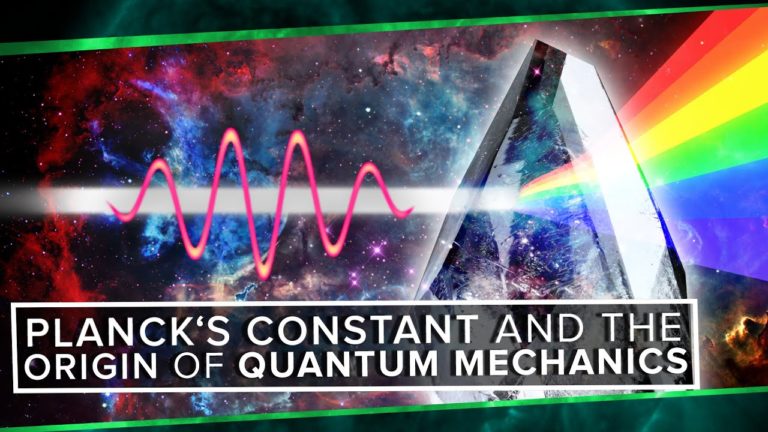Planck’s Constant and The Origin of Quantum Mechanics
What is Planck constant ?
The Planck constant, or Planck’s constant, is a fundamental physical constant denoted {\displaystyle h}h, and is of fundamental importance in quantum mechanics. A photon’s energy is equal to its frequency multiplied by the Planck constant. Due to mass–energy equivalence, the Planck constant also relates mass to frequency.
In metrology it is used, together with other constants, to define the kilogram, an SI unit. The SI units are defined in such a way that, when the Planck constant is expressed in SI units, it has the exact value {\displaystyle h}h = 6.62607015×10−34 J⋅Hz−1.
At the end of the 19th century, accurate measurements of the spectrum of black body radiation existed, but predictions of the frequency distribution of the radiation by then-existing theories diverged significantly at higher frequencies. In 1900, Max Planck empirically derived a formula for the observed spectrum. He assumed a hypothetical electrically charged oscillator in a cavity that contained black-body radiation could only change its energy in a minimal increment, {\displaystyle E,}{\displaystyle E,} that was proportional to the frequency of its associated electromagnetic wave. He was able to calculate the proportionality constant from the experimental measurements, and that constant is named in his honor. In 1905, Albert Einstein determined a “quantum” or minimal element of the energy of the electromagnetic wave itself. The light quantum behaved in some respects as an electrically neutral particle, and was eventually called a photon. Max Planck received the 1918 Nobel Prize in Physics “in recognition of the services he rendered to the advancement of Physics by his discovery of energy quanta”.
Confusion can arise when dealing with frequency or the Planck constant because the units of angular measure (cycle or radian) are omitted in SI. In the language of quantity calculus, the expression for the value of the Planck constant, or a frequency, is the product of a numerical value and a unit of measurement. The symbol f (or ν), when used for the value of a frequency, implies cycles per second or hertz as the unit. When the symbol ω is used for the frequency’s value it implies radians per second as the unit. The numerical values of these two ways of expressing the frequency have a ratio of 2π. Omitting the units of angular measure “cycle” and “radian” can lead to an error of 2π. A similar state of affairs occurs for the Planck constant. The symbol h is used to express the value of the Planck constant in J⋅s/cycle, and the symbol ħ (“h-bar”) is used to express its value in J⋅s/rad. Both represent the value of the Planck constant, but, as discussed below, their numerical values have a ratio of 2π. In this article the word “value” as used in the tables means “numerical value”, and the equations involving the Planck constant and/or frequency actually involve their numerical values using the appropriate implied units.
Planck’s Length is the length below which the concept of length loses its meaning. What exactly does that mean and what are the incredible implications this fact has upon our reality?
Do not forget to share your opinion with us to provide you with the best posts !




0 Comments